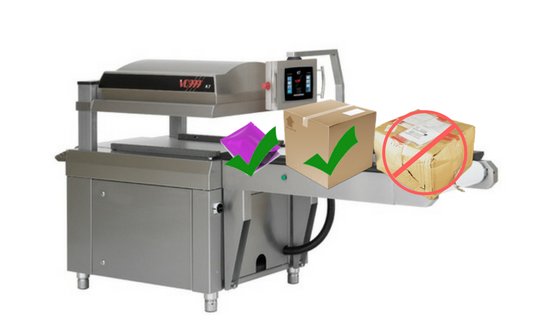How to Effectively Seal Products with Automated Packaging Machinery
Packages with insufficient seals can compromise your product and subsequently hurt your company. Inadequate sealing can result in higher costs for machine reworking, recalibration, scrap, and spill cleanup. For perishables such as food items, a bag without a proper seal can result in shorter shelf life, poor product quality, risk of contamination, and messes for consumers.
Forming Adequate Seals with Heat Sealing
Most versatile packaging machines create seals using heat seal jaws or bars. When heated, these parts close over the portion of the package where the seal will be, causing the sealant layers to melt and fuse together. However, certain factors can result in faulty seals.
Here are some of the preventable issues.
Poor Sealing Jaw Construction and Uniformity
One issue that could happen has to do with poor uniformity. The strength of a packaging seal must be uniform to properly protect the packaged product. Sealing jaws can only create the perfect seal if they operate with consistent force and temperature across the entire sealing area. To make sure your seals are uniform, choose a packaging machine with sealing jaws that have been forged from a single piece of metal. This can help avoid temperature and pressure fluctuations, resulting in a strong seal.
The problem with sealing jaws made with more than one piece of metal is that they can create inconsistent seals because of fluctuating pressure and temperatures.
Misaligned Sealing Jaws
If package seals are weak on one side but strong on the other, this likely indicates that your jaws are poorly aligned. Oftentimes packaging machine technicians and operators will move the jaws into alignment using a small piece of metal. However, this isn’t the safest method.
You’re better off following a preventative maintenance plan that checks for misalignment at various points throughout the machine’s lifespan, such as:
- Prior to startup
- Following a material jam
- Following changeovers
- Following recent maintenance or upgrades
Dust & Debris in the Seal Area
When product is present in the bag seam throughout the heat sealing process, the areas where the product is present won’t adhere properly. This can have a negative impact on seal integrity, resulting in risk of leaking and contamination. To prevent dust from gathering on the seal area, you should clean it periodically.
Perform Preventative Maintenance
Packaging machine technicians or operators should clean and inspect sealing jaws on a daily basis as part of a complete preventative maintenance plan. This can help ensure that dust and other particulate won’t build up on the sealing bars. This can also help make sure that any small issues with sealing jaw alignment or function are identified and addressed before they can become a major problem.
Impulse Sealing
Rather than heat sealing, another sealing method to consider is impulse sealing. Unlike heat seal jaws that require consistent electricity and heat, impulse sealing bands only need electrical energy, creating heat solely during the heating phase of the sealing cycle. These bands heat up and cool down within a few hundred milliseconds to a few seconds at most. This gives the package seal time to cool prior to being released from the sealing mechanism.
By avoiding the aforementioned issues and implementing preventative maintenance measures and cleaning, you can keep your packaging machines working the way they should.




